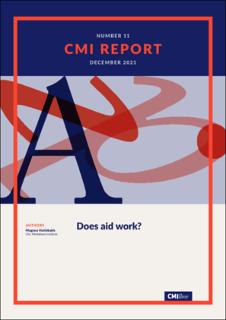| dc.description.abstract | This report attempts to understand why research findings differ on the impacts of foreign aid on in particular economic growth, but as a corollary also on the impacts of aid on poverty and other welfare indicators. The report has to go in some detail on the econometric techniques used, and a main finding is that recent research using instrumental variables provides findings that in reality are not so different from earlier findings. There is thus some convergence in estimates, although not necessarily in the interpretation of these estimates. It appears to be a robust finding that economic growth increases a few years after an increase in foreign aid. Some authors interpret this as a causal effect, others not, and we are not able to resolve this issue. If we believe the full effect has a causal interpretation, then the impact of aid is large. The new estimates are consistent with earlier reports saying that aid at the level of 10% of GDP will raise the growth rate by one percentage point. This is a large effect, an increase in the growth rate from, for example, 2% to 3% means that GDP will double in 23 years instead of 35 years. The estimates for poverty reduction and other welfare indicators are also positive, although with variation between indicators. For poverty the estimates are large, but based on only a few studies, and with borderline significance levels. The study comparable to the growth estimates above reports that aid at the level of 5% of GDP will reduce poverty by as much as 15 percentage points. It is also found that aid has positive impacts on schooling and infant mortality rates. Returning to the underlying mechanisms, we find, for example, that aid increases investments and private consumption, but not necessarily government consumption. And there is some, but not full, fungibility, so that aid to the health sector, for example, seems to stick and contribute to the decline in infant mortality. The report also go in some detail on policies for pove | |
